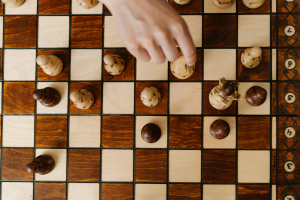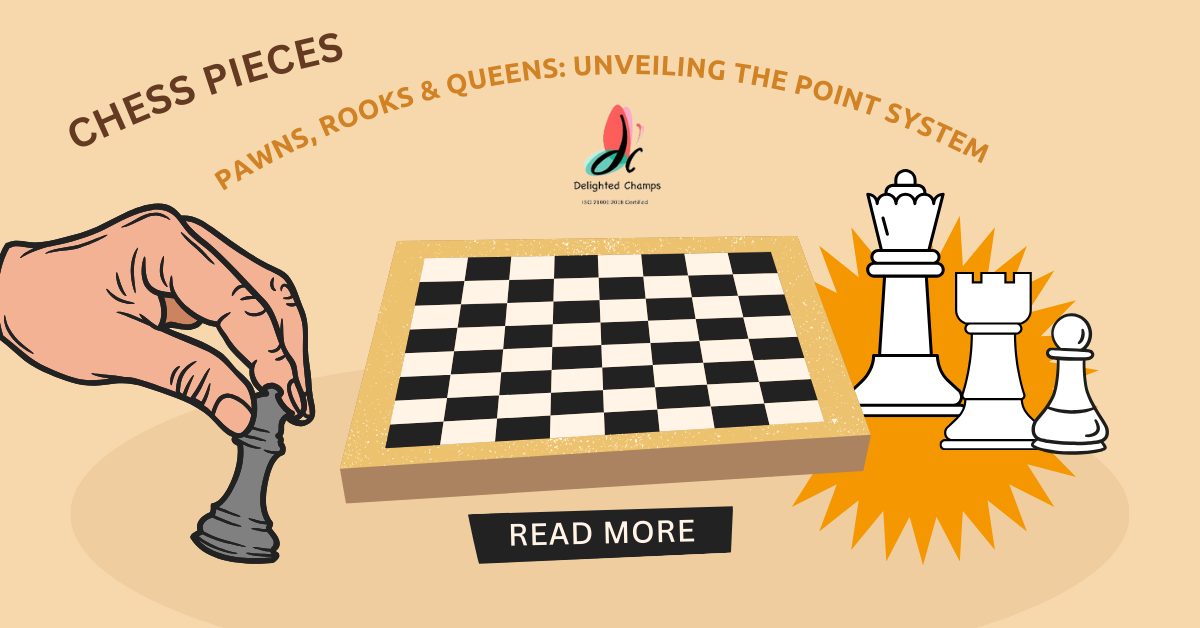Ever wondered why a queen is way more powerful than a pawn in chess? This blog breaks it down simply! We will explore the point system behind chess pieces, focusing on pawns, rooks, and queens. Get ready to learn how much each piece is “worth” and why it matters for your next chess game!
Well, to say, assigning a point value to each piece is a crucial concept for mastering the game. Although it is not a strict rule, understanding the relative value of pawns, rooks, and queens gives a deeper strategic understanding. So, let’s explore the fascinating world of chess piece value!
1. The Value System in Chess
Imagine the chessboard as a battleground.
The Chess Pieces are assigned different values based on their strengths and weaknesses.
Pawns, the foot soldiers, are assigned 1 point, rooks clock in at 5 points, highlighting their ability to control open spaces. Finally, the queen reigns supreme with a value of 9 points.
1.1 The Point System

The point system is just a starting point. A piece’s value isn’t static; it fluctuates throughout the game. A pawn on the verge of promotion becomes much more valuable than a lonely pawn stuck on the back rank. Similarly, a rook trapped behind pawns loses some of its power.
1.2 Beyond the Numbers
The point system is a measure that is helpful to make your decision during the game as to which piece should be traded for another piece.
Ready to Take Your Chess to the Next Level?
Now that you have known the secrets of the point system, delve deeper into chess strategy. Remember, practice makes one perfect, so challenge yourself with puzzles and games to hone your new found skill. With dedication and this new knowledge, you will be a chess strategist worthy of any opponent!
1.3 Bonus: Fun Facts About Chess Pieces!

1. What are the values of each piece in chess?
Pawns (1 point), Rooks (5 points), Knights (3 points), Bishops (3 points), Queen (9 points). The King has no point value because its capture signifies defeat.
2. Which one is the most curious chess piece, and why?
The pawn! It’s the only piece that can move differently upon capture. Plus, it has the potential for promotion* which adds a unique layer of strategy.
Promotion: In chess, promotion is the replacement of a pawn with a new piece when the pawn is moved to its last rank. This means a pawn can transform into any other chess piece (except a king) of the player’s choice, typically a queen, rook, bishop, or knight. Promotion often leads to interesting strategic possibilities and can drastically change the course of a game.
3. What’s the most useful chess piece, excluding King/Queen
This can be debated, but rooks and knights are strong contenders. Rooks excel in open positions, while knights can maneuver over other pieces, making them adaptable throughout the game.
4. What is the most powerful chess piece besides the Queen?
The Rook.
5. What are the 16 pieces in chess called?
There are actually 32 pieces in chess (16 for each player). They are: 1 King, 1 Queen, 2 Rooks, 2 Bishops, 2 Knights, and 8 Pawns (per player).
6. What is the significance behind each type of chess piece?
Each piece reflects a different military unit from history. Pawns represent foot soldiers, rooks – chariots, knights – cavalry, bishops – archers or advisors, and the queen the ultimate ruler.
7. Why are chess pieces captured and not killed?
This is likely because the objective is to checkmate the opponent’s king, rendering their army leader unable to continue the battle, not to eliminate every enemy piece.
2. Final Thoughts
The world of chess piece value can seem complex at first, but hopefully, this blog has shed some light on the strategic importance of pawns, rooks, and queens. Remember, understanding value is just one piece of the puzzle. There is so much more that this joyful and engaging game has to offer, so learn chess now and apply these learnings.




